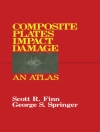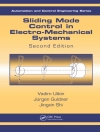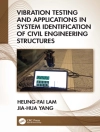UNMANNED AIRCRAF T SYSTEMS
UNMANNED AIRCRAF T SYSTEMS
An unmanned aircraft system (UAS), sometimes called a drone, is an aircraft without a human pilot on board ??? instead, the UAS can be controlled by an operator station on the ground or may be autonomous in operation. UAS are capable of addressing a broad range of applications in diverse, complex environments. Traditionally employed in mainly military applications, recent regulatory changes around the world are leading to an explosion of interest and wide-ranging new applications for UAS in civil airspace.
Covering the design, development, operation, and mission profiles of unmanned aircraft systems, this single, comprehensive volume forms a complete, stand-alone reference on the topic. The volume integrates with the online Wiley Encyclopedia of Aerospace Engineering, providing many new and updated articles for existing subscribers to that work.
The chapters cover the following items:
* Airframe configurations and design (launch systems, power generation, propulsion)
* Operations (missions, integration issues, and airspace access)
* Coordination (multivehicle cooperation and human oversight)
With contributions from leading experts, this volume is intended to be a valuable addition, and a useful resource, for aerospace manufacturers and suppliers, governmental and industrial aerospace research establishments, airline and aviation industries, university engineering and science departments, and industry analysts, consultants, and researchers.
Mục lục
Contributors vii
Foreword xiii
Preface xv
Part 1 Introductory 1
1 UAS Uses, Capabilities, Grand Challenges 3
Part 2 Missions 15
2 Remote Sensing Methodology for Unmanned Aerial Systems 17
3 Autonomous Parachute-Based Precision Delivery Systems 29
4 Networked Multiple UAS 53
5 Weapons Integration 63
Part 3 Airframe Configurations 73
6 Classes and Missions of UAVs 75
7 Launch of UAVs 85
8 Recovery of UAVs 93
9 Development of Centimeter-Sized Aerial Vehicles 101
Part 4 UAS Design and Subsystems 111
10 Overview of UAS Control Stations 113
11 Propulsion Systems 125
12 Power Generation and Energy Management 133
13 Control System Mechanization 153
Part 5 Autonomy 165
14 Relative Navigation in GPS-Degraded Environments 167
15 Target Detection and Mission Planning Based on Pigeon-Inspired Optimization 177
16 Autonomy Architectures 197
17 Obstacle Avoidance: Static Obstacles 211
18 Guided Weapon and UAV Navigation and Path-Planning 217
19 Embedded UAS Autopilot and Sensor Systems 231
Part 6 Control 249
20 Modeling and Frequency-Domain Parameter Identification of a Small-Scale Flybarless Unmanned Helicopter 251
21 Trajectory Planning and Guidance 279
22 Sensor Fusion 295
Part 7 Human Oversight 317
23 Function Allocation between Human and Automation and between Air and Ground 319
24 Coordination with Manned Aircraft and Air Traffic Control 327
25 Aircraft Pilot and Operator Interfaces 335
Part 8 Multi-Vehicle Cooperation and Coordination 345
26 Multi-UAV Cooperation 347
27 Coordinated Standoff Tracking of Moving Ground Targets Using Multiple UAVs 357
28 Distributed Situational Awareness and Control 371
29 Cooperative Search, Reconnaissance, Surveillance 383
30 UAV Swarms: Decision-Making Paradigms 397
31 Integrated Health Monitoring for Multiple Air Vehicles 411
32 Cooperative Control for Multiple Air Vehicles 425
33 Flight Formation Control 435
Part 9 Airspace Access 447
34 Operational Profiles of Unmanned Aircraft Systems in the Context of the US Regulatory Regime 449
35 High Altitude: Among and Above Commercial Transport 465
36 Low-Altitude Rural to Urban Unmanned Aircraft System Operations 475
37 UAS in the Terminal Area: Challenges and Opportunities 489
38 Unmanned Aircraft Systems Operations in US Airspace 507
39 Aircraft Communications and Networking 523
40 Sense-and-Avoid System Based on Radar and Cooperative Sensors 533
41 Standards and Interoperability: A Systems Engineering Perspective 547
Part 10 Integration Issues: Safety, Security, Privacy 559
42 Unmanned Aircraft Systems (UAS) – Regulatory Policy and Processes: A Moving Landscape – A US Perspective 561
43 Requirements: Levels of Safety 579
44 Insurance as a Mission Enabler 589
45 Fail-Safe Systems from a UAS Guidance Perspective 599
46 UAS Reliability and Risk Analysis 615
47 Sense and Avoid: Systems and Methods 627
48 System and Cyber Security: Requirements, Modeling, and Management 637
49 Social and Legal Issues 651
Subject Index 661
Giới thiệu về tác giả
EDITORS
ELLA ATKINS
ANÍBAL OLLERO
ANTONIOS TSOURDOS












